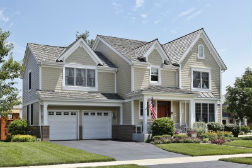 Home increased in October according to Case-Shiller’s 20City Home Price Index. Home prices rose from September’s annualized reading of 5.40 percent to 5.60 percent. Factors contributing to rising home prices include stronger economic conditions and outlook along with short inventories of available homes coupled with high demand. On average, October home prices rose 5.10 percent on seasonally adjusted annual basis, which was unchanged from September’s reading.
Home increased in October according to Case-Shiller’s 20City Home Price Index. Home prices rose from September’s annualized reading of 5.40 percent to 5.60 percent. Factors contributing to rising home prices include stronger economic conditions and outlook along with short inventories of available homes coupled with high demand. On average, October home prices rose 5.10 percent on seasonally adjusted annual basis, which was unchanged from September’s reading.
West Continues to Lead Home Price Growth
Top home price growth rates were in Seattle, Washington at 10.70 percent, Portland, Oregon at 10.30 percent and Denver, Colorado with a seasonally-adjusted annual price increase of 8.30 percent. New York, New York had the lowest home price growth in October with a reading of 1.70 percent.
In a separate report, December consumer confidence exceeded expectations with an index reading of 113.70 as compared to an expected reading of 110.00 and November’s reading of 109.40. This was the highest reading for consumer confidence since 2001. Analysts said that the strong reading for consumer confidence was a sign that consumers will increase their spending in 2017, but what will happen with mortgage rates is a big question.
Rising Mortgage Rates May Slow Home Prices, High Demand for Homes
With the Federal Reserve’s decision to raise its target federal funds range in December comes a question of how rising mortgage rates will affect housing markets. Rising fed rates typically lead to increases in consumer lending rates including rates for home loans and refinancing. Combined effects of rising home prices and mortgage rates create challenges for first-time and moderate income home buyers. While higher mortgage rates have not impacted buyer demand so far, rising mortgage rates could sideline some buyers.
A recent compilation of the most expensive places to live in America illustrates the imbalance of home prices as compared to consumer incomes. Brooklyn, NY topped this list with a reading of 127.70 percent of average household income earned in Brooklyn to buy an average priced home in Brooklyn. Analysts reporting this data noted that many Brooklyn homeowners work in Manhattan and earn more than those who work in Brooklyn. Disparities in average home prices and home buyer incomes could “trickle down” to less expensive areas if mortgage rates and home prices continue to rise.
Meanwhile, builder confidence is strong and is expected to lead to higher levels of home construction in 2017.

